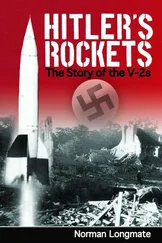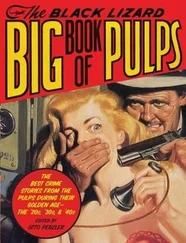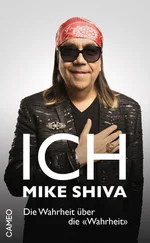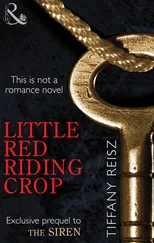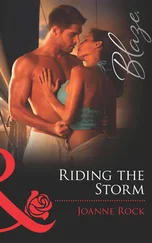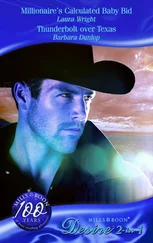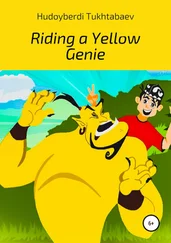Mike Mullane - Riding Rockets
Здесь есть возможность читать онлайн «Mike Mullane - Riding Rockets» весь текст электронной книги совершенно бесплатно (целиком полную версию без сокращений). В некоторых случаях можно слушать аудио, скачать через торрент в формате fb2 и присутствует краткое содержание. Жанр: Старинная литература, на английском языке. Описание произведения, (предисловие) а так же отзывы посетителей доступны на портале библиотеки ЛибКат.
- Название:Riding Rockets
- Автор:
- Жанр:
- Год:неизвестен
- ISBN:нет данных
- Рейтинг книги:3 / 5. Голосов: 2
-
Избранное:Добавить в избранное
- Отзывы:
-
Ваша оценка:
- 60
- 1
- 2
- 3
- 4
- 5
Riding Rockets: краткое содержание, описание и аннотация
Предлагаем к чтению аннотацию, описание, краткое содержание или предисловие (зависит от того, что написал сам автор книги «Riding Rockets»). Если вы не нашли необходимую информацию о книге — напишите в комментариях, мы постараемся отыскать её.
Riding Rockets — читать онлайн бесплатно полную книгу (весь текст) целиком
Ниже представлен текст книги, разбитый по страницам. Система сохранения места последней прочитанной страницы, позволяет с удобством читать онлайн бесплатно книгу «Riding Rockets», без необходимости каждый раз заново искать на чём Вы остановились. Поставьте закладку, и сможете в любой момент перейти на страницу, на которой закончили чтение.
Интервал:
Закладка:
Another first was the political diversity of the group. Military pilots, the mainstay of prior astronaut selections, were almost always politically conservative. They were highly educated, self-reliant, critical thinkers who scorned the “everybody’s a victim” ethos of liberalism. But the reign of the right ended with the large number of civilian astronauts standing on that stage. Among their ranks were people who had probably protested the Vietnam War, who thought Ted Kennedy’s likeness should be on Mount Rushmore, who had marched for gay rights, abortion rights, civil rights, and animal rights. For the first time in history, the astronaut title was being bestowed on tree-huggers, dolphin-friendly fish eaters, vegetarians, and subscribers to the New York Times.
There was another uniqueness about the civilians…their aura of youthful naïveté. While the average age difference between the military and civilian astronauts wasn’t extreme (approximately five years), the life-experience difference was enormous. Some of the civilians were “post-docs,” a title I had first heard that inauguration day. Literally, they had been perpetual students, continuing their studies at universities after earning their PhDs. These were men and women who, until a few weeks ago, had been star gazing in mountaintop observatories and whose greatest fear had been an A- on a research paper. Their lives were light-years apart from those of the military men of the group. We were Vietnam combat veterans. One helicopter pilot, told of making low-level rocket attacks and having exploded body parts hit the windshield of his gunship and smear it with blood. We were test pilots and test engineers. In our work a mistake wasn’t noted by a professor in the margin of a thesis, but instead brought instant death. Rick Hauck, a navy pilot, had barely escaped death in an ejection from a crashing fighter. I had my own fighter-jet ejection experience.
It wasn’t just this proximity to war and death that differentiated the military flyers from the post-docs, it was also the civilians’ lack of exposure to life…at least their exposure to the rawer side of life. On a stopover in the Philippines on my way to Vietnam I checked into a hotel and was handed a San Miguel beer and a loose-leaf binder with photos of the available prostitutes. It was room service. Place your order now. As they say, one of the first casualties of war is innocence. To sit at a Vietnamese bar was to have a woman immediately at your side stroking your crotch, trying to make a sale. Everybody had a favorite number at the Happy Ending Massage Parlor (to simplify identification, available girls wore numbered placards around their necks) and I knew many aviators in Vietnam who had their PCOD circled on their calendar. This was their Pussy Cutoff Date, the date at which they would have to stop their whoring to allow the incubation period for STDs to pass (and for a cure to be achieved) before going home. One navy TFNG told of sitting in a dirt-floored Southeast Asia bar while a naked GI got it on with a prostitute on an adjacent table. It was just a wild guess on my part, but I doubted any of the post-docs had similar experiences in the Berkeley SUB. There was a softness, an innocence in their demeanor that suggested they had lived cloistered lives. It was hard for me to look at some of them and not think they were kids. Some might still have been virgins. Steve Hawley, George (Pinky) Nelson, and Anna Fisher were exceptionally young in the face. There was no way they were going to get inside a bar without being carded. Jeff Hoffman was the picture of academia. He had arrived at NASA with a beard and a collapsible bicycle suitable for the Boston subway. He didn’t even own a car. He rode to work on his bike and carried a lunch pail. All that was missing were suede elbow patches on his suit coat and a pipe in his mouth to make the “professor” picture complete.
I felt a subtle hostility toward the civilian candidates. I know many of the military astronauts shared my feelings. In our minds the post-docs hadn’t paid their dues to be standing on that stage. We had. For us, it had been a life quest. If someone had told us our chances of being selected as an astronaut would improve if we sacrificed our left testicle, we would have grabbed a rusty razor and begun cutting. I couldn’t see that passion in the eyes of the civilians. Instead, I had this image of Sally Ride and the other post-docs, just a few months earlier, bebopping through the student union building in a save-the-whales T-shirt and accidentally seeing the NASA astronaut selection announcement on the bulletin board and throwing in an application on a lark. Now they were here. It wasn’t right.
As the photographers continued to flash-blind the females and minorities, I watched Judy Resnik and Rhea Seddon (pronounced “Ray”). Between them, there would be one more first represented in our group: the first “hotty” in space. Judy was a raven-haired beauty, Rhea a striking Tennessee blonde. No TFNG male was looking at them and fantasizing about their PhDs.
Chapter 6
The Space Shuttle
As we TFNGs gloried in our introduction, we were woefully ignorant of the machine we were going to fly. We knew the space shuttle would be different from NASA’s previous manned rockets, but we had no clue just how different or how the differences would affect the risks to our lives.
Before the space shuttle, every astronaut who had ever launched into space had ridden in capsules on throwaway rockets. The only thing that had ever come back to Earth was the capsule bearing the astronauts. Even these capsules had been tossed aside, placed in museums across America. While the capsules had grown in size to accommodate three men, and the rockets to carry them had grown bigger and more powerful, the basic Spam-in-a-can design, launched with expendable rockets, had been unchanged since Alan Shepard said, “Light this candle,” on the first Mercury-Redstone flight.
We would fly a winged vehicle, half spacecraft and half airplane. It would be vertically launched into space, just as the rockets of yesteryear, but the winged craft would be capable of reentering the atmosphere at twenty-five times the speed of sound and gliding to a landing like a conventional airplane. Thousands of silica tiles glued to the belly of the craft and sheets of carbon bolted to the leading edge of the wings and nose would protect it from the 3,000-degree heat of reentry. After a week or two of maintenance and the installation of another 65,000-pound payload in the cargo bay, it would be ready to launch on another mission.
The space shuttle orbiter (the winged vehicle) would have three liquid-fueled engines at its tail, producing a total thrust of nearly 1.5 million pounds. These would burn liquid hydrogen and liquid oxygen from a massive belly-mounted gas tank or External Tank (ET). Eight and a half minutes after liftoff the empty ET would be jettisoned to burn up in the atmosphere, making it the only part of the “stack” that was not reusable.
As powerful as they were, the three Space Shuttle Main Engines (SSMEs) did not have the muscle to lift the machine into orbit by themselves. The extra thrust of booster rockets would be needed. NASA wanted a reusable liquid-fueled booster system but parachuting a liquid-fueled rocket into salt water posed major reusability issues. It would be akin to driving an automobile into the ocean, pulling it out, and then hoping it started again when you turned the key. Good luck. So the engineers had been faced with designing a system whereby the liquid-fueled boosters could be recovered on land. It quickly became apparent that it would be impossible to parachute such massive pieces of complex machinery to Earth without damaging them and posing a safety hazard to civilian population centers. So the engineers looked at gliding them to a runway landing. One of the earliest space shuttle designs incorporated just such a concept. Like mating dolphins, two winged craft, each manned, would lift off together, belly to belly. One would be a giant liquid-fueled booster/gas tank combination, the other, the orbiter. After lifting the smaller orbiter part of the way to space, the booster would separate and two astronauts would glide it to a landing at the Kennedy Space Center (KSC). The astronauts aboard the orbiter would continue to fly it into space using internal fuel for the final acceleration to orbit velocity.
Читать дальшеИнтервал:
Закладка:
Похожие книги на «Riding Rockets»
Представляем Вашему вниманию похожие книги на «Riding Rockets» списком для выбора. Мы отобрали схожую по названию и смыслу литературу в надежде предоставить читателям больше вариантов отыскать новые, интересные, ещё непрочитанные произведения.
Обсуждение, отзывы о книге «Riding Rockets» и просто собственные мнения читателей. Оставьте ваши комментарии, напишите, что Вы думаете о произведении, его смысле или главных героях. Укажите что конкретно понравилось, а что нет, и почему Вы так считаете.

